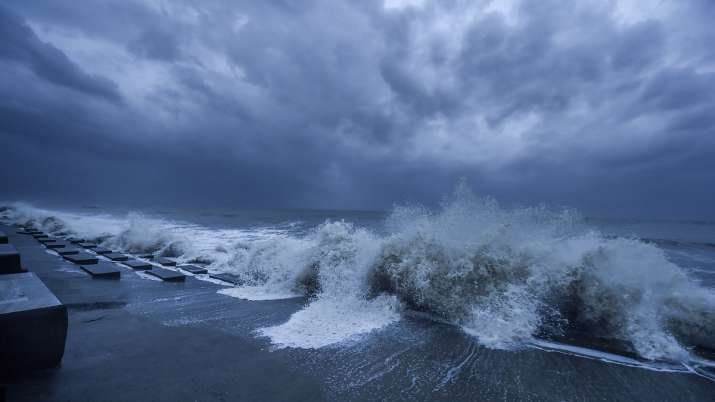
Cyclone Gulab may be preparing for second coming: Know more here

Cyclone Gulab, which made landfall in Andhra Pradesh in the evening of September 26, is expected to re-emerge in the Arabian Sea and the adjoining Gujarat Coast by around September 30 and may further intensify over the northeast Arabian Sea during the subsequent 24 hours, the India Meteorological Department (IMD) has confirmed.
During its travel westwards as a low pressure area, the cyclone will continue to bring rainfall in Telangana, Maharashtra and Gujarat till September 30.
The Cyclone had formed in the Bay of Bengal on Saturday prior to its landfall in Andhra’s Kalingapatnam.
Cyclones usually occur in India either between March and May or between October and December. Cyclone Gulab is one of the rare cases of cyclones occurring in the June-September monsoon season or the southwest monsoon season, which doesn’t allow cyclogenesis due to the presence of strong winds.
The southwest monsoon has strong westerly winds in the lower troposphere and very strong easterly winds in the upper troposphere, a phenomenon which results in high wind shears (difference in wind speeds at lower and upper atmospheric levels). This thwarts clouds from forming vertically and prevents monsoon depressions from intensifying into cyclones.
The last cyclone that had formed in the Bay of Bengal during September was Cyclone Day in 2018. According to Down to Earth, only 50 cyclones have formed in September between 1891 and 2020 against 124 in October and 145 in November, the last two months being the most cyclone-generating seasons.
While six cyclones have formed in September in the Bay of Bengal and Arabian Sea in the last 20 years, Gulab, the third-most in the bay, has the unique distinction of crossing the peninsula into the Arabian Sea.
What led to the formation of Cyclone Gulab?
Despite the usual presence of unfavourable conditions for cyclogenesis in September, experts attribute the brewing of Cyclone Gulab to weaker southwesterly winds this year.
Mrutyunjay Mohapatra, the director general of IMD told Indian Express that three factors – the in sync phase Madden Julian Oscillation (MJO), warm sea surface temperatures over the Bay of Bengal, and the formation of a low pressure system on along the lower latitudes helped in the formation of the cyclone.
Also, the system had very rapidly progressed through the stages – from being a low pressure, a well-marked low pressure, depression, deep-depression to a cyclone – before its eventual landfall.
What is helping Gulab survive?
While cyclones usually weaken after landfall as their warm core wears out and their source of moist air is cut off, experts say Gulab has survived as there is an abundance of moisture available in its course in northwest India.
“This being a typical September feature, that too when the southwest monsoon continues to be active, there is moisture available. In addition, the wind shear is weak and there is no obstruction of any kind to weaken the system while on land,” RK Jenamani, senior forecaster, National Weather Forecasting Centre, New Delhi told IE.
IMD chief Mohapatra says while the re-emergence of a single cyclone across coasts may not be a common phenomenon, also is not a completely rare one.
The latest example could be the very severe Cyclone Gaja which formed in the Bay of Bengal in November 2018. After touching land in Tamil Nadu, it crossed over to the Arabian Sea off the Kerala coast, only to dissipate a few days later.
Given the current situation of Cyclone Gulab, weathermen say its remnants could intensify in the next few days and the cyclone will be given a new name once it gathers a wind speed of 68-87kmph.
Roxy Mathew Koll from the Indian Institute of Tropical Meteorology told IE that there is a strong possibility of Cyclone Gulab re-emerging off the Gujarat coast due to favourable atmospheric and oceanic conditions.
Mohapatra assured that while the anticipated second wave of the cyclone may not affect India, the IMD has alerted other countries in the India Ocean to send warning to their fishermen who are already out in the sea.

